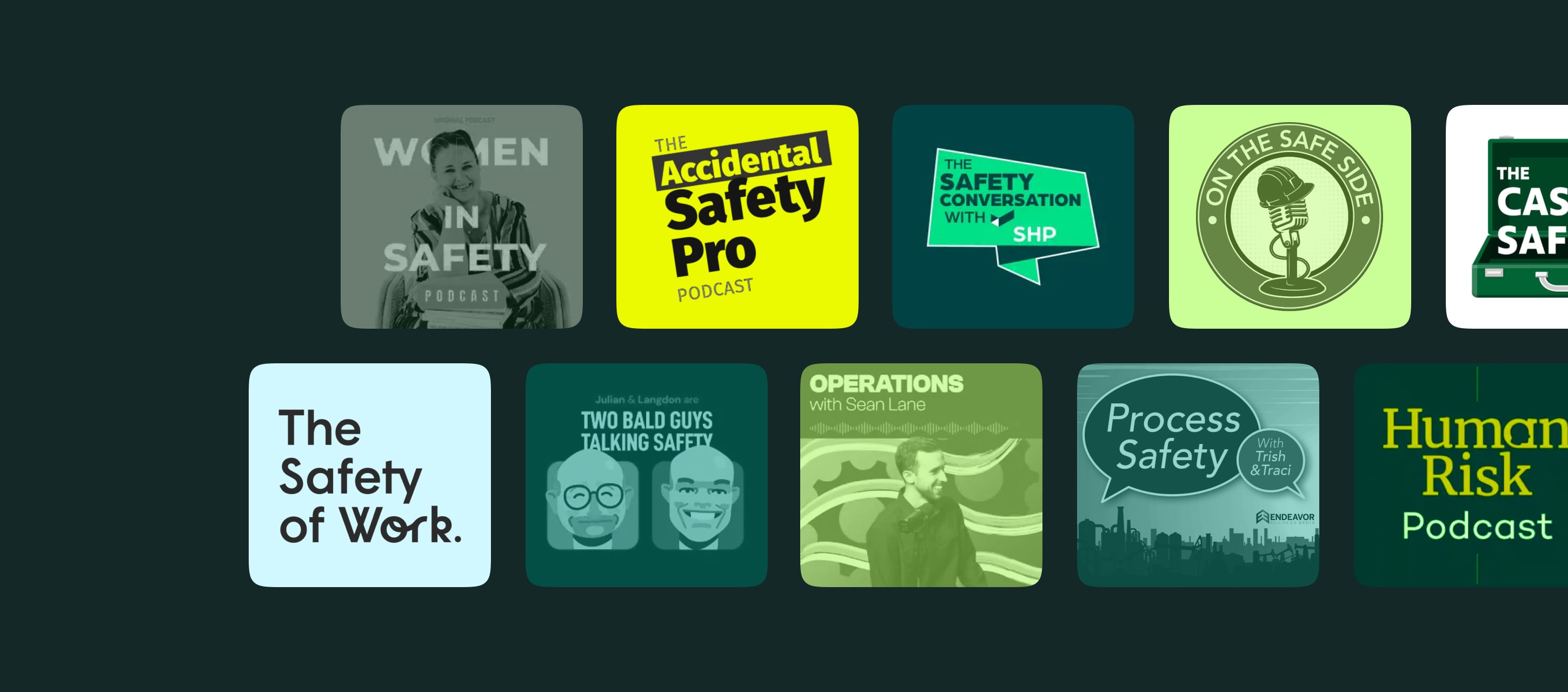Imagine you could spot and fix potential risks before they lead to accidents. That’s the power of data-driven safety – a proactive approach that combines real-time data, smart tools, and informed decisions.
It also helps you protect your workforce and keep operations running smoothly. Let’s see how.
Contents:
What Is Data-Driven Safety?
Data-driven safety is a management strategy that relies on data collection, analysis and interpretation to drive decisions about workplace safety.
This method shifts safety management from “what happened” to “what might happen next – and how can we stop it.
Let’s say your team regularly conducts inspections on heavy machinery. Traditionally, safety management might involve logging breakdowns and investigating what went wrong.
With a data-driven approach, IoT sensors installed on the machinery continuously monitor factors like vibration levels, temperature, and runtime. If the data shows unusual vibrations trending upward, it’s a red flag that a mechanical issue may be on the way. Instead of waiting for its arrival, you can schedule preventive maintenance immediately.
The Benefits of Data-Driven Safety
The main one? Prevent accidents before they happened. But the list goes one.
Faster Response, Less Downtime
When you use real-time data, your team can respond to potential hazards immediately. For example, if IoT sensors on a piece of equipment detect overheating, you can intervene before it leads to a failure.
Ownership Driving Safety Culture
When people see the impact of their actions on safety metrics, they are more likely to follow protocols.
Smarter Resource Allocation
Data allows you to allocate resources where they’re needed most. Instead of spreading your budget thin, you invest in targeted solutions.
Easier Compliance
With a data-driven system, you’ll have everything you need – incident reports, inspection logs, compliance checklists – organized and ready. This makes safety compliance, smoother and keeps your team focused on work, not paperwork.
Needless to say that a safer workplace is a more productive one. When your team trusts that risks are under control, they work more efficiently. And you as a safety leader have more peace of mind.
How to Implement Data-Driven Safety
Field operations come with risks, from unpredictable environments to tight schedules. But with the right mindset, you can create a system where safety and field productivity go hand in hand. Here’s how to do it.
1. Assess Current Safety Measures
How effective are your current measures? To answer this, begin by performing safety audits and gathering data from trusted sources: IoT devices, incident reports, and yes, direct feedback from your field teams.
Centralizing this data into one system will make it easier to spot patterns.
2. Establish KPIs
You can’t fix what you don’t measure. That’s where KPIs come in. Focus on primary safety metrics that reflect both safety and productivity, like response times to near-misses or compliance with job-site checklists.
Not sure where to start? Data from OSHA shows that proactive reporting reduces injury rates by up to 50%, helping both morale and efficiency.
3. Do It Step-byStep
Implement data-driven safety in iterative phases. Start with a pilot program, gather feedback and make adjustments before scaling up the approach across the entire organization. Assess effectiveness, review incident trends and make adjustments to the strategy as needed.
4. Make Training Count
Educate leaders and employees at all levels on the importance of data-driven safety. Create a clear understanding of the role each employee plays in a strong safety culture supported by accurate data and employee safety training.
5. Establish Real-Time Monitoring
Implement a clear process for gathering and reviewing safety data as well as identifying trends or anomalies. Discuss how to use this information to make informed decisions about safety improvements.
6. Don’t Stop Improving
Regularly reassess safety measures, updating protocols based on data analysis. Seek feedback from employees on the effectiveness of safety initiatives to improve your workplace safety effectively.
7. Get Support from Your Team
Ensure that leadership commits to a data-driven safety approach prior to implementation. You’ll need broad support to secure resources and foster an overarching culture of safety.
By the same token, engage employees in the program at all levels and give them critical roles on the implementation team. Seek their input on safety measures, encourage reporting and recognize contributions to a safer workplace.
Read More Read More The ops manager’s guide to the top 10 job safety analysis tools
Tools for Your Data-Driven Safety Initiatives
How do you ensure the above practices are put to practice? By choosing the right tools. The combination of software, IoT devices and mobile technology can improve safety protocols and transform your overall safety management.
Here’s how each tool contributes to a safer, more efficient workplace.
1. Software
Every system starts with structure. OHS software provides that structure by organizing your safety data and processes in one place. When your team isn’t scrambling for forms or switching between platforms, they can focus on what matters – working safely and efficiently.
Fluix, for example, provides for safety-critical sectors full-cycle safety documents management, from checklist creation to data collection and approvals to integrations with tools like Power BI or Tableau, and others.
2. IoT Devices and Sensors
IoT devices give you real-time visibility into your field environment. Sensors on equipment or in the workplace can alert you to potential safety hazards, such as overheating machinery or fluctuating air quality. This data allows you to respond proactively, avoiding accidents and costly downtime.
Here’s a practical example: A construction firm equipped its fleet with GPS and vibration sensors. These tools not only improved equipment safety but also helped optimize routes, cutting idle time by 20%. Safer equipment meant fewer delays and more time spent on productive tasks.
3. Mobile Devices
Mobile technology has changed the game for field operations. With smartphones and tablets that support incident report writing, you can complete inspections, file incident reports, and communicate updates straight from the job site.
Imagine this: During a routine inspection, a field worker spots an issue with scaffolding. Instead of waiting to file a report back at the office, they use a mobile app to document the problem, including photos. The result? Faster repairs, fewer interruptions, and better real-time safety communication.
Start Your Data-Driven Safety Program with Fluix
Fluix is a field productivity tool with extensive functionality for health and safety management. It offers flexible, lightweight solutions so teams can input critical data and send it for approvals from anywhere.
We understand that adopting new tools can be tricky, especially if your processes rely heavily on paper. That’s why we work closely with you to set up customized workflows that reflect your existing operations. We’ll guide you through:
- Integrating with analytics platforms like Power BI or Tableau to visualize safety data trends.
- Digitizing safety forms like pre-task checklists or hazard reports
- Automating approvals for faster incident response
If you’re ready to take the first step toward a safer, more efficient workplace, we’re here to help.







